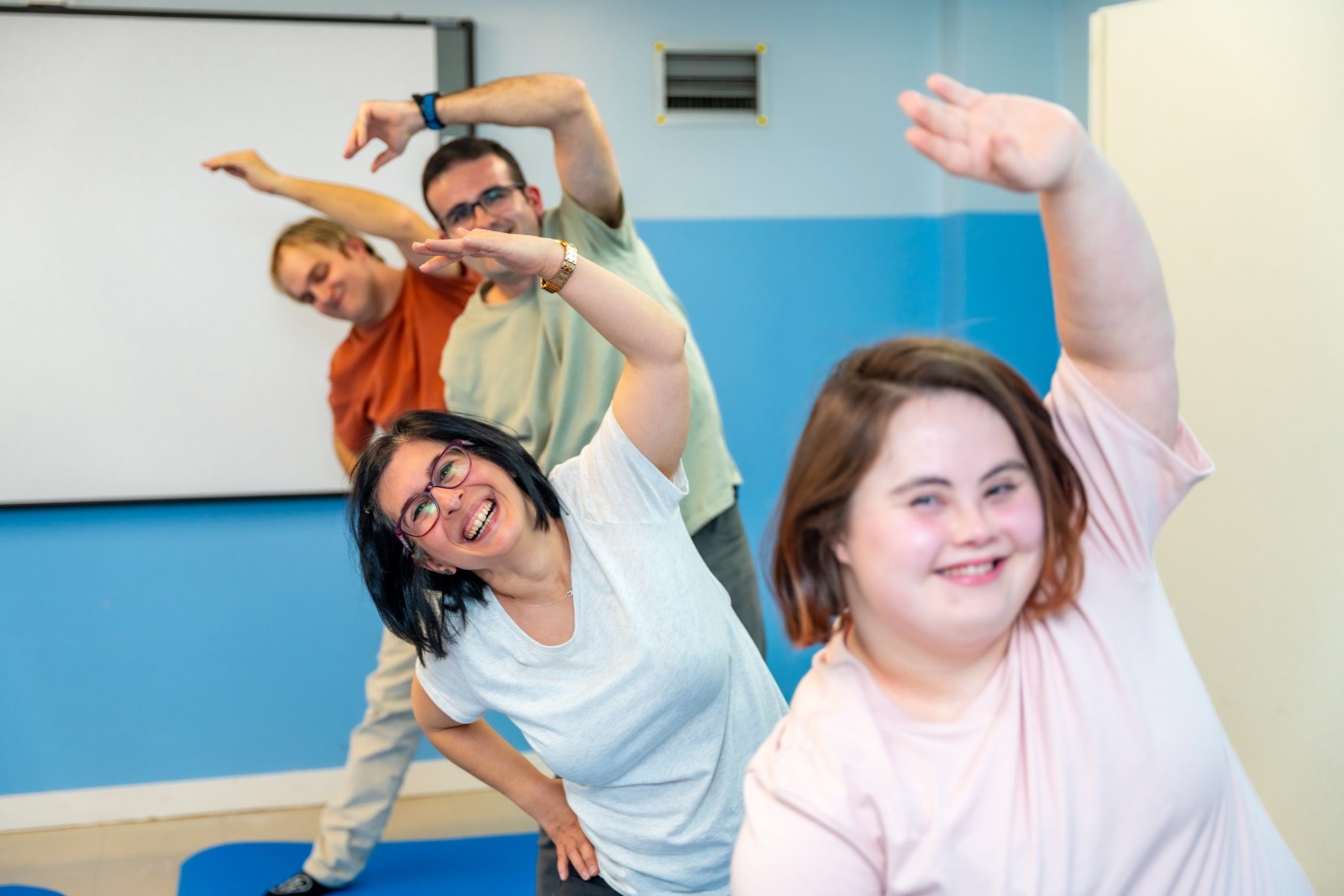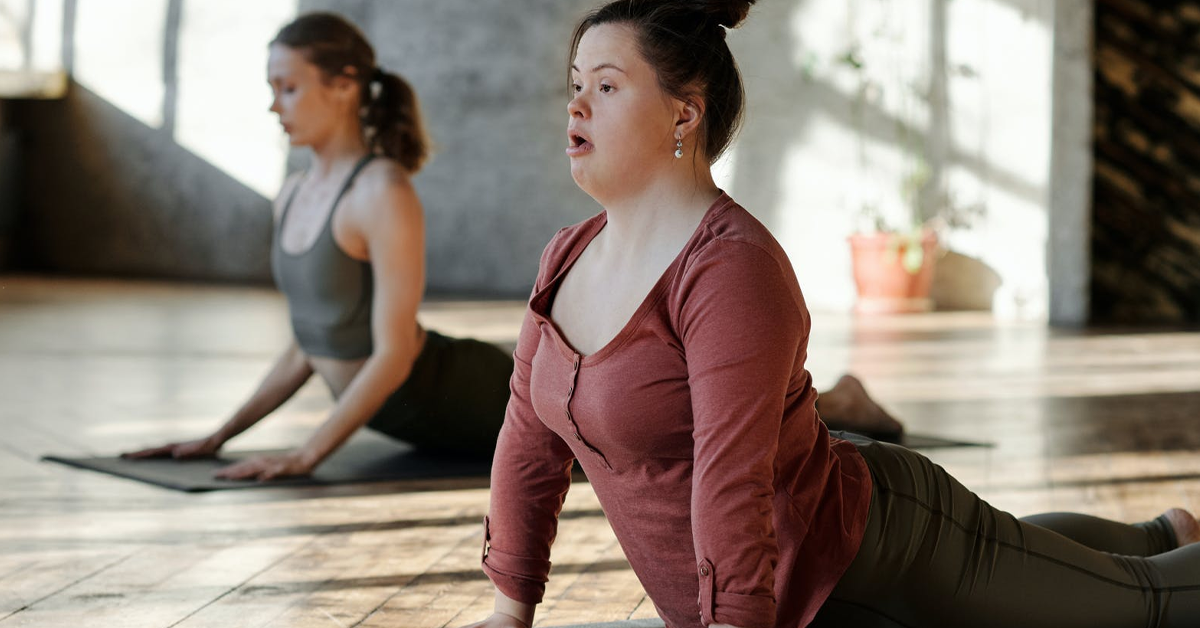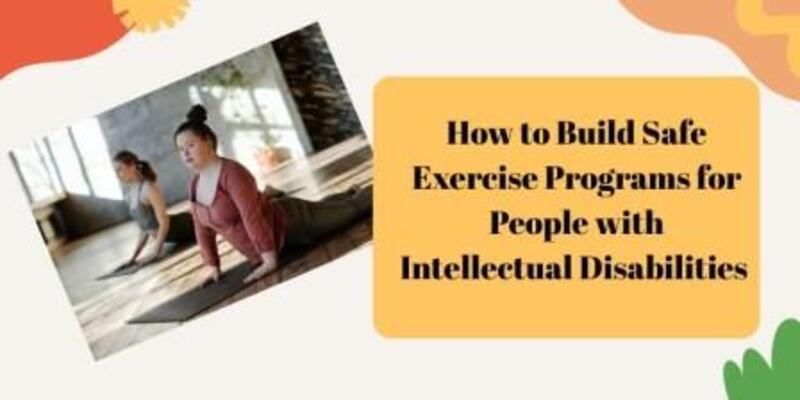Developing inclusive and effective physical exercise programs for people with intellectual disabilities (ID) is not a question of physical health only but also an issue of self-confidence, emotional health, and social interactions. Some factors, such as lack of access to programs, trained instructors, and false beliefs about their ability, are the main barriers that people with intellectual disabilities frequently encounter on their way to regular physical activity.
Therefore, exercise programs must be designed with safety, enjoyability, and accessibility in mind so that these can help them maintain overall health and quality of life. This article describes some principles, safety concerns, and program elements to develop programs regarding safe exercise for intellectual disabilities.
Intellectual Disabilities And Physical Health: What You Need to Know
Intellectual disabilities are defined by profound restraint in intellectual performance (reasoning, learning, and problem-solving) and adaptive behavior, a set of antecedent daily social and functional abilities. These impairments are mostly pre-18 years of age and may be mild, moderate, or severe.
Issues related to health that people with intellectual disabilities tend to be more at risk of include obesity, cardiovascular disease, diabetes, and low muscle tone as a result of sedentary living and inhibited access to physical activity. Such obstacles can be:
- Poor availability of fitness centers
- Nonexistent custom programming
- Lack of assistance or monitoring
- Problems of communication
- Low self-confidence or motivation
Hence, any exercise program to be used with this group should not only be planned with physical improvement in mind but also take into consideration social inclusion, emotional support, and safety.

The Advantages of Exercise for People with ID
When physical activity for special needs adults is safe and well-organized, it may considerably increase the quality of life of these people. The significant advantages are:
- Better physical health: Enhanced cardiovascular fitness, muscle strength, stretch, and coordination.
- Weight control: Decreasing the possibility of obesity and associated health issues.
- Improvement of mental health: Reduced anxiety and depression, self-esteem, and mood improvement.
- Social interaction: Chance to develop friendships, learn to work in a team, and train communication skills.
- Enhancement of cognition skills: Exercise also contributes to cognition and executive processing.
Guidelines to Create A Safe Exercise Program
Developing fitness plans for disabilities should start with well-established principles that you can use in the guidance of planning and execution. These ideals are:
Individualization
The capabilities, the interests, and the medical conditions of every individual are different. Carry out initial assessments that:
- Present fitness status
- Mobility/motor
- Medical history and issues
- Behavioral orientations
- Individual tastes and aims
You should design programs based on these results and modify them over time.
Simplicity and Structure
Employ simple instructions, routines to be repeated, and obvious visual or verbal signals. Planned sessions assist members to learn what to expect as well as gaining confidence in their bodies. An overload of variability may generate confusion and demotivation.
Safety First
First, safety is a priority. Exercises must:
- Be under the watch of trained personnel or caretakers
- Apply relevant and handy equipment
- Incorporate warm-up and cool-down stages
- Be held in clear, safe places
- Do not engage in very intense activities that may result in injury or burnout.
You need to observe the participants to address their state of discomfort, fatigue, or any behavioral distress immediately.
Monitoring and Assistance
You also require supervision to achieve safety from qualified instructors, caregivers, or peer buddies. They are also needed to reinforce instructions, assist during exercises, and offer encouragement.
Progressive Overload and Adaptation
As with any exercise regime, it should be gradual. Initially, begin with low-intensity exercises and gradually add complexity and length according to the progress of the person. Make adjustments to suit any physical or mental constraints.
Essential Elements of a Safe Exercise Program
Adaptive workout plans for special needs comprise several elements to accommodate all round fitness and health:
Cardiovascular Activities (15-30 minutes)
These exercises make the heart and lungs healthier. Examples include:
- Strolling (in malls or outside)
- Movement or dancing to music
- Stationary bicycling
- Swimming or water aerobics
Begin with 5-10-minute sessions and slowly work up the length (15-30 minutes) and intensity depending on comfort and ability.
Strength Training (10-20 minutes)
Muscle development aids in posture, stability, and daily living. Appropriate exercises are:
- Body weight exercises (e.g., push-ups against the wall, seated leg raises)
- Resistance bands
- Supervised light free weights
Two to three times per week, strength training ought to target major muscle groups.
Flexibility and Balance (10 -15 minutes)
Flexibility and balance are components that, when improved, prevent falls and improve the range of motion. Incorporate:
- Light stretching exercises
- Yoga or modified yoga
- Tai chi, or easy balance games
During the warm-up and cool-down stages, flexibility exercises are best.
Leisure Time Activities (30 -60 minutes)
It can be done through the incorporation of lively and entertaining activities that will encourage social interaction. Examples:
- Group games (e.g., bowling, parachute play)
- Dancing lessons
- Simplified rules of team sports
Recreation provides a positive incentive to the program.

Roles and Duties
The planning and development of these inclusive fitness programs usually takes a joint effort between:
- Fitness professionals: Trainers who are experienced or certified in adaptive fitness will be able to lead a session at a safe and practical level.
- Health professionals: Doctors or physical therapists can offer clearance or condition-specific advice.
- Caregivers and family: Support and encouragement by trusted people boost adherence and comfort.
- Participants themselves: The involvement of the participants in decision-making will promote autonomy and empowerment.
Considerations of Exercise Safety for Disabilities
When dealing with people with intellectual disabilities, the establishment of a secure environment is a necessary condition. - A few important points to note are:
- Medical Clearance: It is wise to talk to a healthcare giver before starting a new exercise program, and it is imperative in cases of such conditions as congenital heart disease, epilepsy, or joint issues.
- Environment: Make sure the area in which the workout is done is clear, well-lit, and available. Put non-slip mats and fasten any equipment to avoid tripping.
- Hydration and Breaks: Breaks and frequent water breaks should be encouraged, and rest should be given when necessary.
- Communication: Use positive reinforcement and simple, clear language. Illustrations, hand signals, or how-to videos can be handy.
- Emergency Preparedness: Personnel and teachers ought to be trained in first aid and be aware of the course of action in the event of a medical crisis or a behavioral episode.
Measuring Progress and Adapting
Evaluation of progress keeps the participants aware of their improvement and guides changes in the programs of custom fitness for intellectual disabilities. Use:
- Basic fitness tests (e.g., timed walks, repetitions)
- Monitoring of behaviors (e.g., mood, engagement)
- Response of participants and Caregivers
You can modify the programs according to results, responses, and alternate health conditions.
Conclusion
An effective means to facilitate the well-being of individuals with intellectual disabilities is constructing secure exercise programs. With an emphasis on person-centered care, safety, routine, and belonging, we will build surroundings in which individuals with ID will feel safe to move, develop, and flourish.
Exercise is not just a booster of physical health, but it also paves the way for social interaction, self-esteem, and autonomy. Inclusive fitness does not only involve accommodating movements, but it is also about appreciating the value, abilities, and potential of every individual. So, start creating personalized workouts for intellectual challenges!












